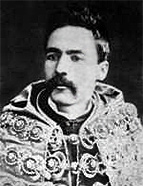

Montemor-o-Novo was the focal point of his narrative, where he was appointed as a permanent teacher of Portuguese, Latin, French, and rural administration and economics. His appreciation for the land is still evident today. There, he met his wife, Elisária Eugenia da Mata e Costa, who came from a noble family, and in her honour, he wrote A Mulher e a vida ou a Mulher Considerada debaixo dos seus Principais Aspectos [Women and Life or Women and their Defining Aspects] (1872). In this work, we naturally observe the influence of Catholicism and traditional education; however, he transcends these values by contemplating the role of women in society, striving to elevate them from their subservient status and asserting their equality to men in cognitive abilities and the freedoms they should possess, emphasising the importance of women's education.
We can contrast this position, which aligns with the English women's suffragette movement, with that of J. P. Oliveira Martins, a proponent of socialism, who sought a solution to the social wounds of modern society. In the articles since A Província his negative interpretation of women's political freedom, opposing women's suffrage, is very different from that of Lopes Praça, who in his work supports women's suffrage (this interesting aspect has already given rise to a master's thesis by Helena de Fátima Gonçalves de Castro, entitled Emancipação da Mulher e Regeneração Social... [Women's Emancipation and Social Regeneration...], 2000).
The law student was involved in student organisations and, at that time, he contributed to several academic publications such as A Academia [The Academy] or A Revista de Legislação e Jurisprudência [The Journal of Legislation and Jurisprudence]. This regular collaboration continued in the Porto newspaper A Harpa with an article on Krause and, as we already explored, A Renascença also published one of his articles. Thus, he did not distance himself from society as he charted his course, and by criticising the retreat from public life of Alexandre Herculano, one of his influences, he reveals the characteristics of his own highly active youth.
This work is financed by national funds through FCT - Foundation for Science and Technology, I.P, in the scope of the projects UIDB/04311/2020 and UIDP/04311/2020.
